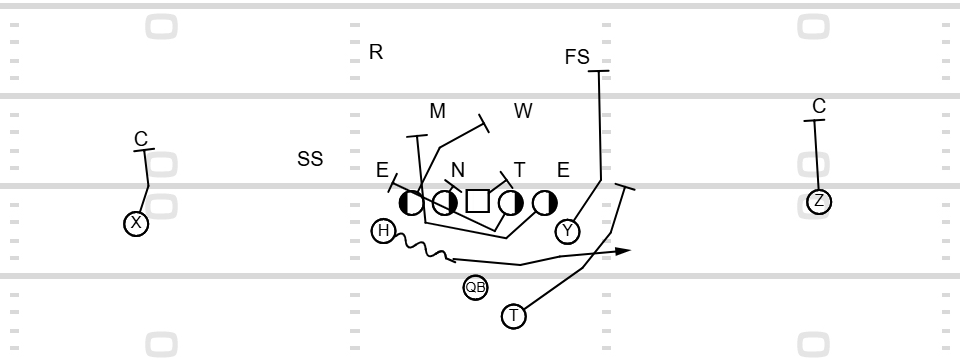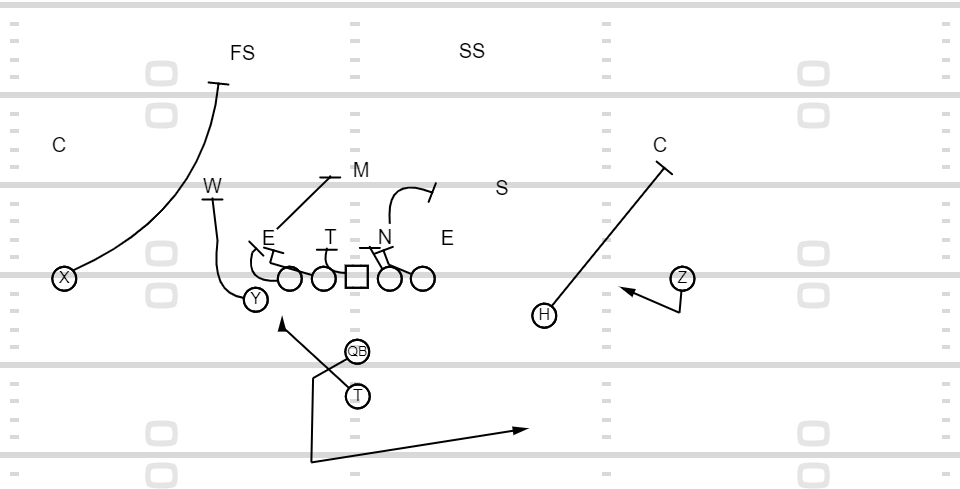How to Build an Offense
A step-by-step framework for any offensive system.
I talk a lot about building your offense around one play.
And I overemphasize that point — on purpose.
Too many coaches (including me) try to install everything they’ve ever seen on X or at a clinic. But the best offenses don’t run everything. They run a small set of plays they’ve mastered.
This post is about how to build an offense — from scratch — without getting caught in the weeds.
Because yes, you’ll eventually run more than one play. But the key is to only add what’s necessary.
Step 1: Pick Your Play
This is your identity. Your bread and butter. The play everything else hangs off of.
I love to talk about Wide Zones, but this is the beauty of football: There are many paths to success. Power, Veer, Buck Sweep, Double Dive… it all works and can win you games if you commit.
Step 2: Build Around Your Personnel
The scheme means nothing without your players.
What’s your best grouping? 11? 12? 10? 21 with a true fullback?
Get your best 11 kids on the field. This is why it's important to pick a foundation that can adapt to your kids.
Some years you might have two stud tight-ends, others you’ve got three speedy receivers. The key is to play to your strengths without reinventing your entire offense every year.
Step 3: Choose Formations That Help Your Base Play
Now that you know your play and your people, it’s time to dress it up.
What formations give you angles, numbers, and leverage?
What looks put the most stress on a defense?
Think about your opponents too. What defenses will you face? Make sure you have formations to stress anything you see.
Step 4: Build in Adjustments — Without Adding Plays
This is where a coordinator gets to get creative, without adding complexity.
Use built-in adjustments without changing the blocking scheme for your line.
Here are some simple ways to add answers:
Tag a fly sweep to attack the perimeter
Add a now screen backside to punish over-pursuit
Use shifts and motion to create confusion without adding plays
The blocking rules stay the same, but the look changes. This allows you to look complex but stay simple.
Want to see what this looks like in action?
If Wide Zone is your base—or you're thinking about making it one—I put together the Wide Zone Foundations Manual, a complete 3-day install plan.
Inside, you'll get:
Blocking rules vs every front
Full install schedule & drills
Personnel tweaks to fit any system
Bonus: Practice plans pulled directly from my installs
Step 5: Add a Play-Action
If you’re good at your base play, defenses will start to sell out to stop it.
That’s where play-action comes in
In our Wide Zone system, that’s the Keeper. In the Wing-T, it’s Waggle.
Whatever the scheme, you need one or you’re leaving explosive plays on the table.
The goal: make everything look the same to the defense until it’s not.
Find that safety or OLB crashing on the run — and make him pay.
Bonus: I’d include 2nd and 3rd-level RPOs here too. Let’s be honest, high school QBs are pulling and throwing 99% of the time. Might as well build it in as a play-action layer.
Step 6: Add One Complementary Run
Now add one play that hits where your base doesn’t.
If your core is Wide Zone (perimeter), add Inside Zone or Counter (downhill).
If your core is Power (downhill), add Toss or jet sweep (outside).
This ensures you can attack the whole field.
That’s it.
Start with one play. Add what helps. Toss the rest.
Great offenses aren’t built on variety. They’re built on clarity.
When your players know what to do, and how to adjust, they can play fast and confident — and that’s what wins games.
One Last Note…
You might be wondering - what about the drop-back passing game?
Drop-back passes and screens are essential, but I treat them as a separate layer, once the foundation is set.
In Part 2 coming soon we’ll cover:
How to build a passing game that fits your base play and formations.
What to install.
The types of passes you need.
Stick to this structure, and you’ll never find yourself calling plays that don’t fit, or installing things just because you saw them work for someone else.






